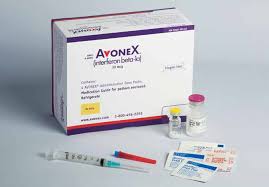MS drugs are expensive. Many people with MS are able to afford their high prices only because their insurance covers most of the cost. Then what remains as a copay has often been covered by the pharmaceutical companies that produce those meds, who have offered patient assistance programs or discount cards to help pay the copay. So, your out-of-pocket costs have been minimal or none. Now, however, that paradigm is changing.
Recently, if a drug company pays some, or all, of your copay, some insurance companies have been refusing to apply that payment to your annual deductible. It doesn’t matter that it’s the same amount the insurance company would get if you wrote the check. Because the money comes from the pharmaceutical company the insurer won’t count it against your deductible.
The impact this has had on one patient was highlighted in a recent article in Kaiser Health News. Kristen Catton uses Gilenya and it’s worked well for her, following two disease-modifying therapy (DMT) failures. She’s been on the med for two years and Novartis, which makes Gilenya, has helped Catton pay her $3,800 monthly copay. That made the medication affordable for her.
Until recently, that copay assistance counted to pay-down Catton’s $8,800 yearly deductible. It also contributed to reaching her out-of-pocket limit. But recently, the insurance company switched gears. The copay assistance from Novartis would no longer be credited against Catton’s deductible. So, when the copay assistance from Novartis ran out a few months into the year, rather than having been worked down, Catton’s deductible was still sitting at $8,800.
Winners and losers
This new process is known in the pharmaceutical industry as copay accumulation. There’s a detailed explanation of how the process works and who benefits in the e-letter Drug Channels. Hint: Employers and health plans save a lot. Patients, on the other hand, may be forced to limit using the drug that had been helping their MS because they can no longer afford them.
According to the Kaiser article, that’s what’s happening to Kristin Catton. “I’m talking to my doctor to see if I can I take (Gilenya) every other day,” she says. “I guess I’m winging it until I can figure out what to do.”
Copay assistance programs do have their critics. They contend that such assistance can encourage patients to use newer, higher-costing therapies when there are more cost-effective drugs available. In the United Kingdom, in fact, there’s a quasi-governmental organization that recommends DMTs to the National Health Service on a cost-effective basis. I wrote about that in an earlier column and, I think, the cost-effective test can have some merit. Some.
On the other hand, KHN quotes Bari Talente of the National Multiple Sclerosis Society as making an important point: Frequently, she says, MS therapies aren’t substitutable. “Most have different mechanisms of action, different administration and different side effect profiles,” she says. So, deciding on a DMT isn’t totally a question of its efficacy.
It’s not fair
The issue is very complex, and I recommend reading the entire KHN story to get the full picture. There’s no easy answer. But there should be no reason for an insurance company to change the rules for a patient like Kristin Catton in the middle of a course of treatment. That’s not what she signed up for. That’s not fair. Fixing that should be easy, right? But I’m not holding my breath.
(A version of this post appeared as my column in Multiple Sclerosis News Today).



